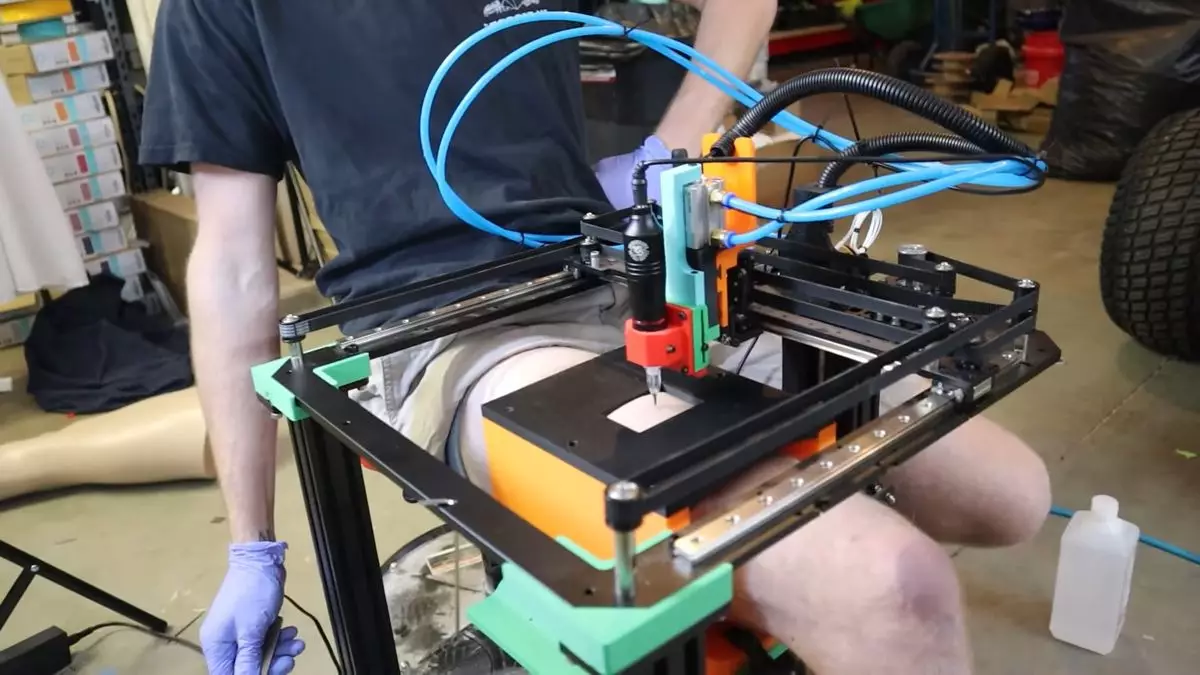Tattooing has historically been an art form requiring skilled craftsmanship, talent, and sometimes a little pain. The traditional method involves a steady hand and years of training to create beautiful and intricate designs on the skin. However, with advancements in technology, especially the rise of 3D printing, the boundaries of artistry are being pushed in exciting and unconventional directions. One innovative example of this trend is the project undertaken by YouTuber Emily The Engineer, who transformed a 3D printer into a tattoo machine, an experiment that opens new avenues for how we think about tattoos and body art.
Emily’s journey begins in a place familiar to many DIY enthusiasts: a 3D printer that she decided to modify. Given her background in technology and engineering, she was no stranger to the ins and outs of machinery. By dismantling an older model printer, Emily envisioned a method of creating tattoos through what might be called “automated artistry.” In this adventure, she not only sought to push the limits of technology but also aimed to address the often high financial barrier associated with professional tattoo application.
Following her creative instincts, Emily bypassed the printer’s firmware to repurpose it for tattoo application. The process involved not just a technical overhaul; it required an understanding of the delicate balance between precision, pressure, and safety—elements critical in any tattooing process. What distinguishes this project from others—like those simply trying to build functional 3D art—is that it involves modifying technology to work in uncharted dimensions, quite literally altering bodies.
With a working concept in mind, Emily meticulously documented her process—from preliminary sketches on paper to inking trials on her own skin and practice materials. But not every aspect of the journey was smooth. One significant hurdle that she encountered was the 3D printer’s inability to accurately tattoo on non-flat surfaces. Tattoos are often placed on various contours of the body, making flat-surface printing impractical. Rather than discard the idea, Emily ingeniously created a bracket that would allow the printer to flatten the uneven surface of Dan’s thigh, her chosen volunteer.
This step illustrates a pivotal part of the engineering process: iteration. By confronting challenges head-on, Emily was able to adapt her approach. It’s often during these trials that true innovation emerges. In this case, safety was paramount. The installation of a lever-controlled solenoid to lift the tattoo machine in the event of a mishap highlighted the importance of securing both the equipment and the human subject involved in such a novel experiment.
Finally, after multiple adjustments and material tests, the moment came for Dan to strap in and experience this intersection of technology and body art. As the machine began to operate, the initial needle pierce marked not just a point of contact but a significant milestone in Emily’s ambitious project. Dan reported that the sensation was “not bad,” an outcome that must have been a relief considering the inherent risks of tattooing, even when done safely.
The completed tattoo was not without its imperfections, reminiscent of the novice artistry one might expect from a machine that had never previously tackled such a task. However, the endeavor should be lauded for its experimental nature and daring spirit. In a world where amateur tattoo machines can lead to less desirable outcomes, Emily’s 3D printed creation represents the beginning of a fascinating dialogue about the future of body art.
While it’s easy to dismiss automated tattooing as a gimmick or simply a novel endeavor, there is a core element to consider: the evolution of artistic expression through technology. Just as 3D printing has already revolutionized industries ranging from manufacturing to medicine, it has the potential to reshape the tattoo landscape. As techniques become more refined and safety protocols are established, we may see a future where automated tattooing becomes part of the mainstream tattoo experience, appealing to both seasoned tattoo enthusiasts and individuals new to body art.
Emily’s project, albeit imperfect, encourages us to think critically about the ways we can integrate art with technology. As society continues to embrace digital innovation, we may find that old traditions adapt to new realities. Therefore, the journey undertaken by Emily The Engineer is not merely about creating tattoos; it’s a glimpse into the potential marriage of art and technology that could redefine future expressions of identity and individuality on the human canvas.


Leave a Reply